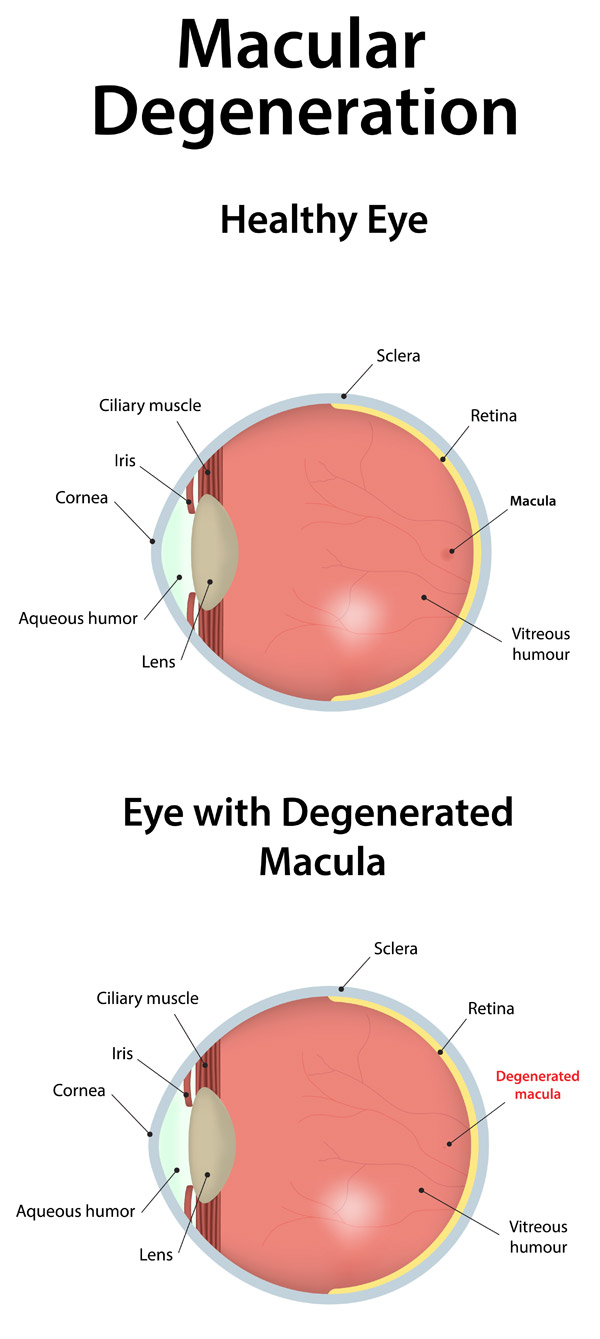Macular Degeneration: Symptoms and Diagnosis
AMD is detected during a comprehensive eye exam that includes a visual acuity test, a dilated eye exam, and tonometry.
Tests for AMD
- The visual acuity test is an eye chart test that measures how well you see at various distances.
- In the dilated eye exam, drops are placed in your eyes to widen, or dilate, the pupils. Then, your eye care professional uses a special magnifying lens to examine your retina and optic nerve for signs of AMD and other eye problems. After the exam, your close-up vision may remain blurred for several hours.
- With tonometry, an instrument measures the pressure inside the eye. Numbing drops may be applied to your eye for this test.
Your eye care professional also may do other tests to learn more about the structure and health of your eye.
The Amsler Grid
During an eye exam, you may be asked to look at an Amsler grid, shown here. You will cover one eye and stare at a black dot in the center of the grid.
While staring at the dot, you may notice that the straight lines in the pattern appear wavy. You may notice that some of the lines are missing. These may be signs of AMD.
Because dry AMD can turn into wet AMD at any time, you should get an Amsler grid from your eye care professional. You could then use the grid every day to evaluate your vision for signs of wet AMD.
The Fluorescein Angiogram Test
If your eye care professional believes you need treatment for wet AMD, he or she may suggest a fluorescein angiogram. In this test, a special dye is injected into your arm. Pictures are taken as the dye passes through the blood vessels in your eye. The test allows your eye care professional to identify any leaking blood vessels and recommend treatment.

